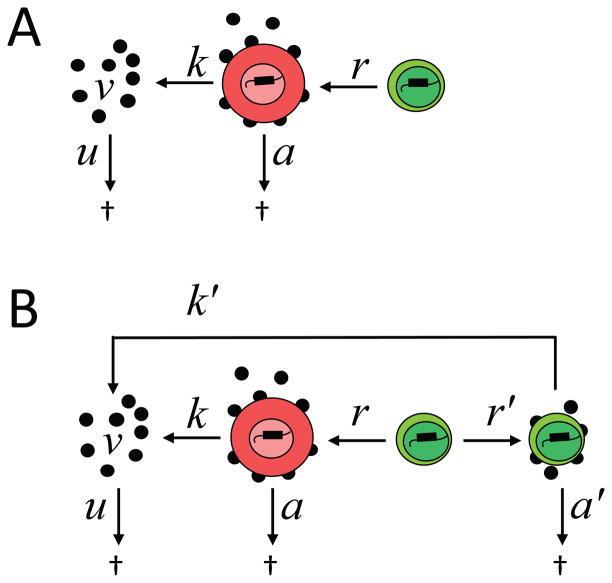Figure 3.
Strategies for targeting latently infected cells. (A) Strategies involving T cell activation. Initial strategies focused on inducing global T cell activation to accelerate the normally slow rate (r) at which latently infected cells become activated, with the assumption that the cells will then die rapidly at rate a. New infections are largely blocked by ART and are not shown. The decay rate of the latent reservoir is extremely slow and is not shown. (B) Current strategies. (B) Alternative strategies. Because of the toxicity associated with inducing global T cell activation, alternative strategies seeks to reactivate latent HIV-1 without inducing T cell activation. The rate of reactivation of HIV-1 gene expression (r′) must be greater than the normal rate r. Because the cells are not activated, the rate of virus production (k′) may be lower than the rate of virus production by activated CD4+ T cells (k′). However, the cells also survive longer (a′≪a). The relationship between these rate constants will determine whether latency reversing agents cause a transient increase in residual viremia and a long term decrease in the size of the latent reservoir.

